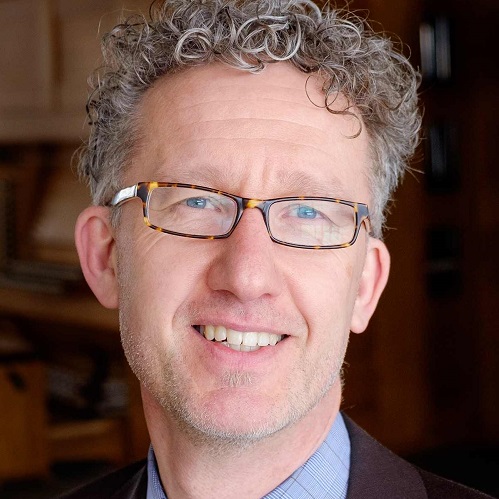Commentary on 2 Samuel 5:1-5, 9-10
This reading combines three different genres:
- a brief narrative about Israel’s elders seeking to join David’s kingdom in verses 1–3;
- two summaries: one about David’s 40-year rule in verses 4–5, and the other about the city of David and his increase in power in verses 9–10; and
- finally, a report of David’s conquest of Jerusalem in verses 6–8.1
Narrative perspective matters
With the request of the tribes of Israel that David be their king, 2 Samuel 5:1–3 concludes a string of episodes about Saul’s demise and David’s rise. These verses present their request for Judean leadership as a logical consequence of the aftermath of the Israelite kingdom in 2 Samuel 2–4. The narrative from 2 Samuel 1–5 portrays David foremost as supportive of Saul and his house, and innocent of Saul’s and Jonathan’s deaths, an aspect that David’s lament over Saul and Jonathan in 2 Samuel 1:17–27 highlights.
A consistent overtone is the matter-of-fact note about David’s increase of strength and about Saul’s failure to stabilize his rule in his northern kingdom: “David grew stronger and stronger while the house of Saul became weaker and weaker” (2 Samuel 3:1). This plot line presents the covenant between the elders of Israel and the anointing of David as an inevitable, logical consequence of the demise of Saul’s kingdom. The passage assiduously paints David’s unlikely rulership over the northern kingdom of Israel as the result of a peaceful royal transition that happened upon the northern tribes’ own request. Verses 1–3 offer the outcome of the contrasting leadership styles of the two rulers Saul and David. The Israelite elders’ request comes to David in Judah’s deep south in Hebron. As Saul had no living heir, he is seen in contrast to the founder of the Davidic dynasty.
The preacher may consider putting in perspective the relevance of the unification between Israel and Judah in biblical historiography with historical constellations and fault lines between the northern and southern states in US history.
David as resourceful guerrilla
The note about David’s conquest of Jerusalem (2 Samuel 5:6–9) adds two aspects to this picture: First, it clarifies the City of David as David’s personally conquered property without the aid of Judean troops. Second, it complements the portrait of David as a resourceful strategist, shrewdly conquering the city by way of entry via the water supply system. This is in line with stories such as the smart shepherd boy David’s unlikely victory over Goliath. In sum, David conquers Jerusalem without the use of military power, and the underlying contextual character of David as shrewd ruler of a small city-state lends this passage relevant context.
Post-colonial perspective matters
The pro-Davidic bias of 2 Samuel 5 requires a post-colonial lens that sets right the point of view and the dimensions of the Judean monarchy. In this story, God sides with the Judeans under David’s leadership. Notably, the narratives about the Judean rulership over the tribes of Israel are written from the perspective of the small Judean state, in comparison with what is, in the time after Solomon, the much larger entity of Israel. The Judean scribes perceive this larger northern state of Israel as misguided through King Saul’s hubris that significantly contributed to its fall. The narratives about David’s kingship assume the military limitations of the Judean state. Judah relates itself in these traditions to Israel’s much more powerful monarchy.
Historiographical perspective matters
In their original context, these narratives portray an ideal past that foreshadows the role the southern state of Judah acquires after Israel’s destruction and deportation in 733/722 BCE, when Judah was the sole remaining state with Judean religion and culture. Avoid any silent identification with the supremacy of the City of David from a US perspective, since this may be misleading and is hardly warranted. The preacher owes the audience a clarification about the original context of the celebration of military protection of the fortress of the City of David.
This is even more necessary, because this Sunday’s lectionary marries David’s conquest with the triumphant overtones of the celebratory remembrance of Zion’s security in Psalm 48. Both celebrations of the stronghold of the City of David refer to a distinctive Judean experience. The Zion psalm remembers the bare survival of a tiny vassal state’s capital against the overpowering army of the Assyrian Empire. Yet this joyful remembrance of the safety of the fortified City of David came at the price of much of Judah’s destruction during this same campaign.
Prophetic perspective matters
How might the preacher best address the allusions to Zion’s security? With references to the challenges of prophetic ministry in the city of Jerusalem in Ezekiel 2, and with the more general challenges of prophetic leadership in Mark 6:1–13, the lectionary invites reading David’s conquest and rulership in contrast to and warning against any posture of cultural superiority. This is a fitting warning, especially since Jerusalem’s conquest in 587/586 BCE serves as bedrock of a counter-memory that drives much of exilic and Second Temple prophetic tradition. The readings for this Sunday put any boasting about the City of David into perspective as they point to the challenges of the prophet’s call to a stubborn people in Jerusalem in Ezekiel 2.
The preacher’s historical perspective matters.
At the time of this writing, a military conflict between Israel and Gaza is in full swing. Preachers may choose to address today’s realities of the “City of David” in Jerusalem and the old city of Hebron (next to the modern Israeli settlement Quiryat Arba’). Both sites of David’s rule are holy places of a shared Jewish-Muslim tradition. The tomb of the patriarchs, the Ibrahimi Mosque, was the place of the 1994 massacre caused by Baruch Goldstein, an American-Israeli physician and extremist of the far-right ultra-Zionist Kach movement.
How might a constructive discourse about national identities and the rhetoric around the City of David and Hebron look? Above all, it may be helpful if ministers can reflect on their own, the religious assembly’s, and the secular community’s conceptions: How are they possibly shaped by a US colonial gaze, and how could they include experiences from either side of the frontier of the Palestinian-Israel war?
Notes
- The author thanks the Rev. Dr. Kim Beckmann for commenting on earlier versions of this commentary.


July 7, 2024